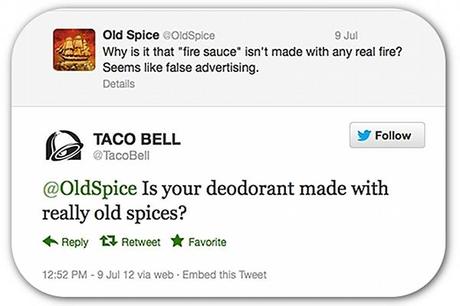Taco Bell is producing a movie. It has nothing to do with a specific product. Here’s a quote from the news story I got this from:
This summer, there will be an online music documentary about indie bands Wildcat! Wildcat! and Passion Pit. The documentary will incorporate Tweets and other social media messages posted during the bands’ performances at the South by Southwest music festival.
So, see, there’s this buzzword “content,” and Taco Bell is all over it.
I’ve talked about how alive Taco Bell appears in non-traditional media.
I think, for purposes of this discussion, you can define content as “something the brand’s fans are genuinely interested in, and do not interpret as dumb, hype-y, old-fashioned promotion (though everyone quietly realizes that it’s all part of an overall corporate initiative).”
All content isn’t about third-party-topics like South by Southwest. A lot of it is about Taco Bell.
It’s just not crass. It fits with the way their fans think.
Here’s a couple selections from their YouTube channel:
The key, which Taco Bell gets, is to tap into the mindset of the people you want to get in a conversation with. People are doing these Draw My Life videos—and Taco Bell knows it.
(If you don’t know about Draw My Life, I bet that video looked incredibly self-serving. Here, let Smosh fill you in. It’s a current thing.)
That’s how content works. You look like you get it. You look like you like their bands, play their games, and (because we all know people who might work there) kind of are them in a way.
So how should a restaurant approach content? First, get a clear idea of your best customers, and know what they do when they’re out in the world.
Know their memes. Know when their memes are played out. Get their jokes. Make jokes they get. Humbly understand your place in their universe, especially if it’s currently pretty limited.
Invite them behind the scenes to see you’re basically just like them.

Tweeting is not, strictly speaking, content, and this isn’t new news, but when the corporation behaves so much like a person it sounds like your friends having a Twitter War, the result can become content: most major news outlets have at least mentioned this. Whoever was manning the tweet desk at Taco Bell that day and jumped to the smart-assed defense really, really converted a lot of fans.
Look, everyone has online relationships with actual people they have never and probably will never meet—it isn’t such a stretch for customers to have relationships with actual people who work at Taco Bell whom we can infer exist as potential online “friends” even though they’re acting on behalf of the company. We don’t mind anymore. If they’re cool.
And Taco Bell content strategists seem cool.
Everybody knows it’s part of a capitalist strategy.
But if it’s interesting, and it feels like something they agree with, and they feel invited in to respond, and it demonstrates that the brand is on their wavelength, it’s okay.
That Taco Bell Flower Shop Speakeasy video has over a million views.
That’s not just the marketing department at Taco Bell and the production company’s interns watching that content.
